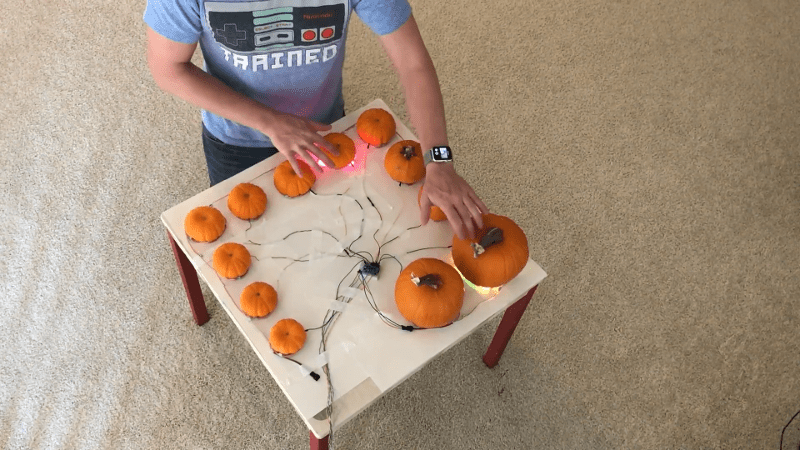Fall – it’s that time of year that brings falling leaves, Hallowe’en, and a pumpkin version of everything that you hold dear. In this case, it’s not a latte – it’s [Robert Vorthman]’s Pumpkin Piano.
[Robert] took a straightforward approach to the build, pressing a Raspberry Pi into service as the backbone of the operation. This is combined with an Adafruit breakout board for the MPR121, which is a chip that provides 12 capacitive touch-sensitive inputs. These are connected to the bountiful produce which make up the piano keys in this fun holiday hack. [Robert] uses some Python code that talks to fluidsynth, a software synthesizer that uses Soundfont files to create different sounds. It’s all wrapped up with some Neopixels that flash when each vegetable is triggered.
The build would make a great party piece for just about any fall gathering, and [Robert] has done a great job of rolling up all the hardware and software required in the write-up. For another take on a vegetable-based orchestra, check out last year’s Harpsi-gourd.

















A gourd time, ha ha he hurr hmmph ..
http://www.reactiongifs.us/wp-content/uploads/2014/01/ba_dum_tss_pirates_band_of_misfits.gif
no gourd can come of this.
I want to see an agourdian.
If bad puns give you a shooting pain over your right eye, I suggest not reading the article or the comments.
Continue reading →
For some reason, I thought the title was “Pumpkin Radio”…
Woah, weird..
I didn’t originally read that, but after reading your comment I looked back at the title and saw radio. How strange.
If you had less pumpkins a makymaky might have been the way to go. Almost all the work is done for you.
Does the makeymakey control neopixels and midi synthesizers? I don’t think so. A Raspberry Pi and an MPR121 touch sensor is $40 combined. The makemakey is $50. The MPR121 allows all 12 pumpkins to be pressed simultaneously.